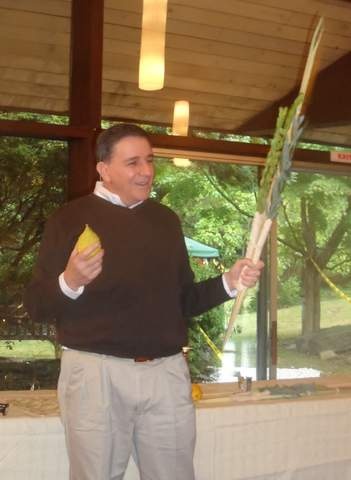Celebrate the High Holidays with WCHJ!
Humanistic Sukkot Service: Saturday, October 19, 2 PM
In order to attend our Sukkot service virtually, please register
here. Only members can attend in person.
You can download the service brochure from here.

What is Sukkot?
Sukkot follows the Jewish New Year. This eight-day festival, also known as Hag Haasif, Festival of the Ingathering, originally was a fall harvest festival. The sukkot (booths decorated with greens and fruits) were huts built in the fields for shelter during the harvest.
In priestly Judaism, Sukkot became a reminder of the Exodus from Egypt, a celebration of God’s power. The booths represented the dwellings of the Hebrews during their forty-year sojourn in the wilderness. Rabbinic Judaism attempted to revitalize this agricultural celebration for an urban population by tying it to the Torah; thus the last day of Sukkot is Simhat Torah, a day of rejoicing in the Torah.
Humanistic Jews find human significance in the original Sukkot celebration. Agriculture was the first step, a quantum leap toward human mastery of the environment. As farms grew into settlements, which became towns and cities, human ingenuity and courage propelled civilization toward the secular age and even greater human achievements.
Sukkot, then, is a tribute to human prowess. Agricultural, industrial, and technological advances all form the basis of a Humanistic celebration of Sukkot.
Sukkot offers an opportunity in the fall for communities to come together, to experience the out-of-doors, to recognize the interconnectedness of humanity, and to acknowledge responsibility for the environment. In ancient times, Jews gathered in booths for the harvest to increase efficiency. For Humanistic Jews, Sukkot offers an opportunity to work together to build the sukka, which then can become the center of an outdoor celebration: a picnic under a roof open to the sun or stars, or a community bonfire that evokes memories of family cookouts or camp overnights.
Three additional themes may reflect the agricultural origins of the holiday. First, building and taking apart the sukka may call to mind the transitory nature of human existence and the fleetingness of human experience. Second, the covering of the sukka is organic, suggesting human beings’ dependence upon nature, as well as their mastery of it. Third, the fullness and beauty of the harvest may focus attention on the abundance of beauty in the world.
Humanistic Jews use the ancient symbols of Sukkot and the lulav (a date palm branch tied together with myrtle and willow) and the etrog (a fragrant citron)—as symbols of the harvest in Israel, a connection to the Jewish homeland.
There is a tradition of welcoming guests, called ushpizin, into your sukka, a tradition that is very consistent with the welcoming attitude of Humanistic Judaism.
For more information, please call Dmitry Turovsky at 914-356-2753 or email info@wchj.org